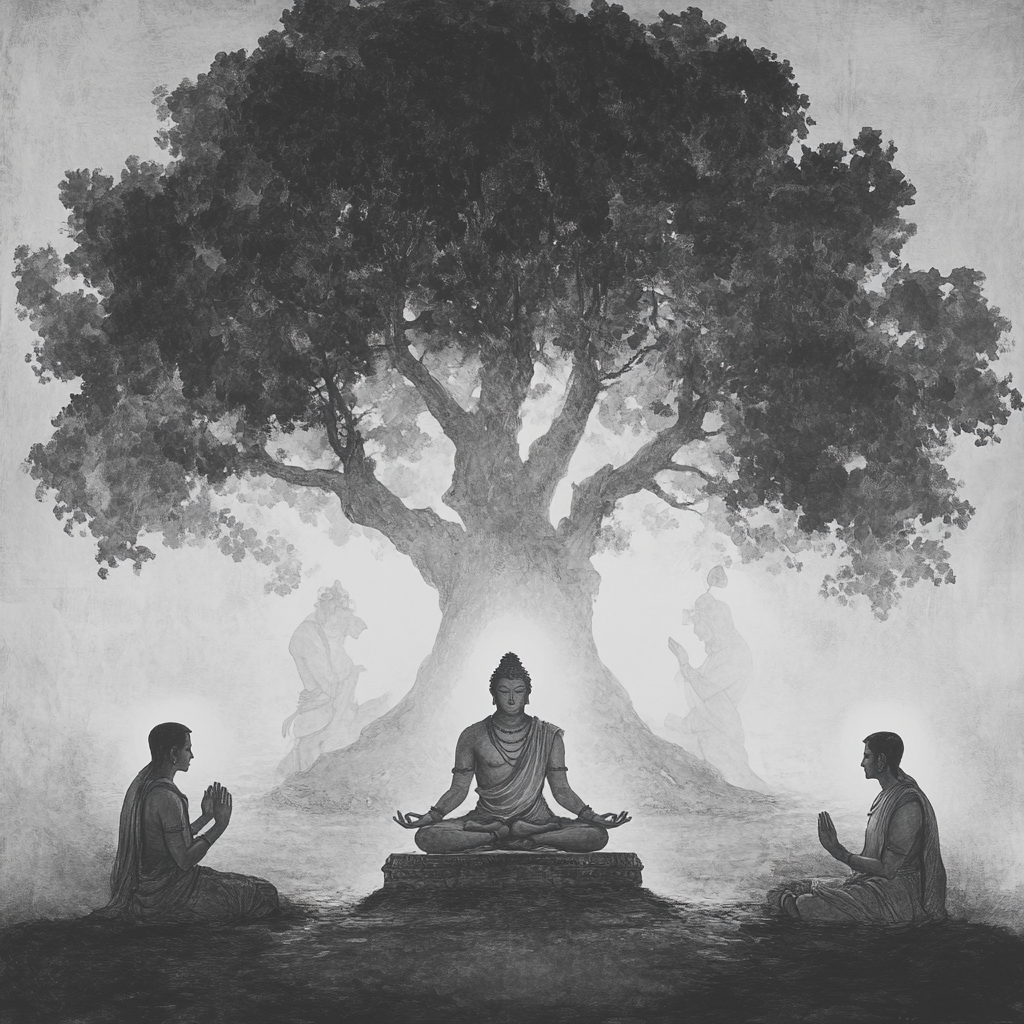In Vedanta and Hindu philosophy, there are three primary paths, or Yogas, that lead to moksha (spiritual liberation). These paths—Bhakti Yoga (the path of devotion), Jnana Yoga (the path of knowledge), and Karma Yoga (the path of selfless action)—offer distinct approaches to attaining liberation from the cycle of rebirth (samsara) and realizing one’s unity with Brahman, the ultimate reality. Each of these paths caters to different temperaments and capacities, allowing individuals to choose the path that best suits their disposition.
1. Bhakti Yoga: The Path of Devotion
Bhakti Yoga is the path of devotion and love toward a personal god. It emphasizes cultivating a deep emotional connection with the divine, surrendering one’s ego, and placing one’s trust entirely in God. In Bhakti Yoga, devotion (bhakti) becomes the primary means of overcoming ignorance (avidya) and ego, allowing the individual to experience divine grace and, ultimately, liberation.
- Devotion to a Personal God: Bhakti practitioners typically choose a personal deity, such as Vishnu, Shiva, or Krishna, as the focus of their devotion. The relationship between the devotee and the deity is often described in terms of intense love, much like the love between a parent and child or between lovers.
- Practices in Bhakti Yoga: Bhakti Yoga includes activities such as singing devotional hymns, chanting the names of God, performing rituals (puja), and meditating on the divine form. The goal is to surrender one’s individual self and ego to God, allowing divine grace to lead to liberation.
- Moksha through Bhakti: In Bhakti Yoga, liberation is attained through divine grace rather than personal effort. By surrendering to the will of God and developing pure devotion, the practitioner transcends the ego and attains union with the divine.
2. Jnana Yoga: The Path of Knowledge
Jnana Yoga: The Path of Knowledge in The Three Paths to Spiritual Liberation in Vedanta is considered the most intellectual and contemplative of the three paths, aimed at realizing the ultimate truth of Brahman through self-inquiry and philosophical reflection. This path emphasizes that liberation is achieved by knowing one’s true self (Atman) and realizing it is identical to Brahman.
- Knowledge of Brahman: Jnana Yoga is based on the principle that ignorance (avidya) is the cause of suffering and bondage. Practitioners seek to dissolve ignorance by acquiring self-knowledge (Atma-jnana)—understanding that the self is not the body or mind but the eternal, unchanging reality, Brahman.
- Self-Inquiry and Meditation: Jnana Yoga involves practices such as meditation, self-inquiry (Who am I?), and studying sacred texts like the Upanishads and Bhagavad Gita. The goal is to strip away layers of illusion (Maya) that hide the true nature of the self.
- Moksha through Jnana: In Jnana Yoga, liberation is achieved through direct realization of non-duality (Advaita), where the practitioner understands that there is no separation between Atman and Brahman. Once this knowledge is internalized, the individual transcends the cycle of samsara and attains moksha.
3. Karma Yoga: The Path of Selfless Action
Karma Yoga: The Path of Selfless Action in The Three Paths to Spiritual Liberation in Vedanta focuses on performing one’s duties without attachment to outcomes or results. This detachment allows practitioners to act in accordance with dharma (righteous duty) while avoiding the bondage created by karmic consequences.
- Selfless Service: Karma Yoga emphasizes acting with altruism and compassion, without concern for personal gain or reward. Every action is performed as an offering to the divine, helping to purify the mind and reduce selfish desires.
- Performing Duty without Attachment: One of the central teachings of Karma Yoga, as presented in the Bhagavad Gita, is the importance of performing one’s duties with detachment. By not being concerned with success or failure, the practitioner remains free from the influence of karma, which normally binds one to the cycle of rebirth.
- Moksha through Karma: In Karma Yoga, liberation is attained when a person’s actions are motivated by selflessness and service to others. Through selfless action, the practitioner purifies their mind, transcends ego, and reduces the karmic debt that binds them to samsara.
Three Paths, One Goal

Bhakti Yoga, Jnana Yoga, and Karma Yoga offer three distinct approaches to achieving the same ultimate goal: moksha or liberation from the cycle of birth and death. Each path recognizes that individuals have different inclinations—some are devotional, some are intellectual, and others are more action-oriented. By following the path that resonates most with their nature, individuals can work toward self-realization and unity with Brahman.
These paths are not mutually exclusive. In practice, many spiritual traditions combine elements of all three, encouraging devotees to cultivate knowledge, devotion, and selfless action in their spiritual journey. Through these varied approaches, Vedanta offers a holistic and inclusive framework for spiritual growth and the attainment of liberation.

